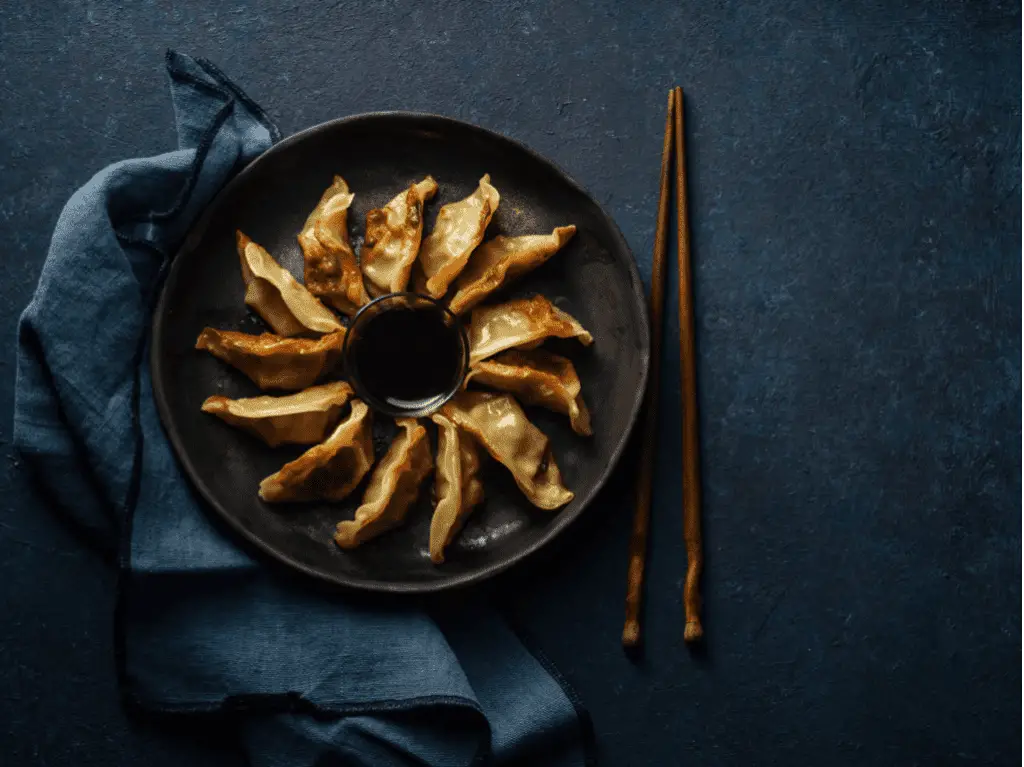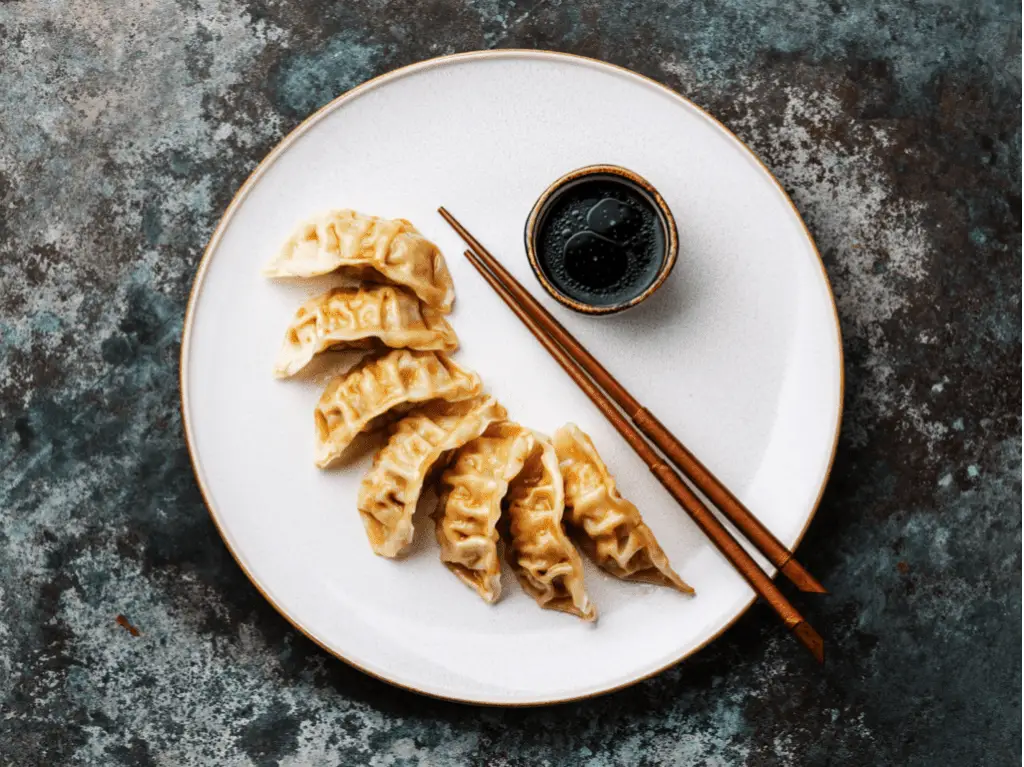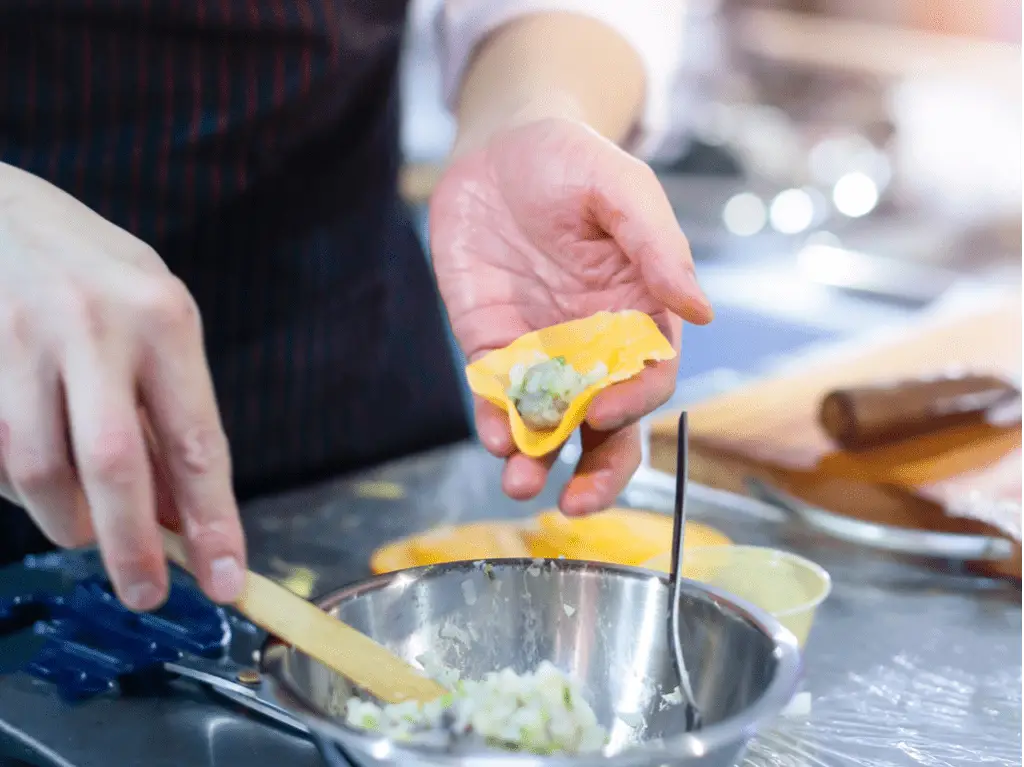One of the best things about exploring another culture’s cuisine is that you not only find delicious meals by which you’re constantly delighted, you also discover how other people relate to their food. In this article, I’m going to delve into Chinese cuisine to see if gyoza is a type of sushi.
Is gyoza sushi? Gyoza is not sushi. The main difference between gyoza and sushi is that gyoza are dumplings made with a thin wrapper filled with ground pork, cabbage, and onion whereas Sushi is typically made with vinegar-treated rice, seafood (raw or cooked), and vegetables.
While there are variations within each category, these distinctions provide a general overview of the two dishes.


However, there’s a Japanese dish called Gyoza Sushi.
What is gyoza sushi? Gyoza sushi is a type of sushi that uses gyoza dumplings instead of traditional sushi rice. The dumplings are wrapped in seaweed and then rolled up, similar to how regular sushi is made. This dish is often served with a dipping sauce, such as soy sauce or vinegar.
They are also two foods that hail from different parts of the world. Gyoza, as mentioned, is Chinese, while sushi is from Japan. They are, however, often enjoyed together.
In this blog, we’ll discuss what types of Gyoza best complement sushi and how to prepare them.
Is Gyoza Sushi?
The question of whether Gyoza is sushi or not can be answered by region. Gyoza is from China, and is a Chinese word. Sushi, on the other hand, is the most famous Japanese food there is. It’s kind of difficult to confuse them.
That being said, there are some similarities that the two dishes share, even though they’re fairly insignificant. The interesting thing about Asian cuisine is often how, on the surface, they can share a lot in common. But you wouldn’t confuse two different types of noodles, such as ramen and soba, so the similarities end with some of the ingredients.
Here are some of the key distinctions between Gyoza and sushi. They are wrapped very differently, but what’s inside them can often be the same thing – fish and vegetables are often staples in Gyoza stuffing.
Sushi, however, is famous for containing raw fish, though it doesn’t always have to. This is not something that can be easily found in Gyoza, as part of the process of making Gyoza involves cooking it.
Further helping clear up any confusion is the fact that Gyoza is often mixed up with an even more similar-looking food: Chinese Potstickers.

What’s the Difference Between Gyoza and Chinese Potstickers?
The difference between Gyoza and Chinese Potstickers is much more subtle than the difference between Gyoza and Sushi. Potstickers are bigger than Gyoza, which can usually be consumed in one or two bites. They’re also wrapped in a thinner dough.
How Thin Should Gyoza Wrappers Be?
In order to achieve the appropriate crispiness when frying the Gyoza, the wrappers should be incredibly thin. Measured out, they should be no more than .04 inches. If you bought them premade and think they are too thick, use a rolling pin to flatten them.
The Best Gyoza To Complement Sushi
Still, there are many people who enjoy having some Gyoza before dining on sushi. It’s a common appetizer in Japan since Gyoza’s popularity exploded worldwide many decades ago. Though it’s a Chinese item and not a Japanese one, there are different ways to prepare Gyoza that can make it region-specific.
As sushi is Japanese, it’s best to work with similarly-themed Gyoza for the appetizer. Japanese Gyoza is typically a fried or deep-fried variety known as Yaki or Age-gyoza, respectively. Most people who enjoy sushi, however, like it because it’s a particularly healthy meal. So Yaki-gyoza is usually the better option. It’s also easier to make if you don’t have a deep fryer.
The first step in preparing Yaki-gyoza is to decide on the stuffing you want. While it’s common for minced pork, vegetables and shiitake mushrooms to be included, having sushi right after is not going to necessarily work well. That’s why a lot of people just stick to vegetables or a different kind of fish such as shrimp.

Oftentimes, vegans will substitute tofu for shrimp, which can have even further health benefits if it is fermented.
Once you’ve made your selections, here’s the process to properly fry the food:
Ingredients:
Shrimp
Napa Cabbage
2 teaspoons of ginger
1 tablespoon of green onion
2 teaspoons of sake
1 teaspoon of salt
1 teaspoon of sesame oil
2 teaspoons of cornstarch
Gyoza wrappers (24)
Canola Oil
Step 1
Gather the ingredients, cleaning and chopping both the shrimp and cabbage as finely as possible. Mix all ingredients except the wrappers and canola oil in a bowl well.
Step 2
Lay out the flat wrappers and place a small handful of the ingredients on top of the wrapping, folding it over into a half-moon shape. Moisten your fingers while pressing them firmly together.
Step 3
Put the canola oil in a pan and heat it. Fry the wrapped gyoza on both sides for 3-4 minutes until crisp. Pour ¼ of a cup of water in the pan and cover it, allowing them to steam on low until the water dissipates completely.
Step 4
Serve and enjoy with whatever dipping sauce you prefer before moving on to your sushi.